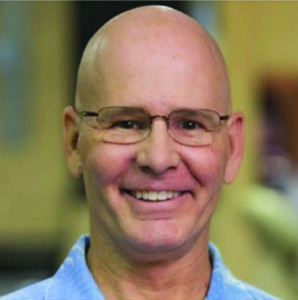Dr. Dave Paquette discusses a combination treatment that reduces time in orthodontic treatment
The concept of “accelerated orthodontic treatment” has gained much notoriety lately. Although patients of all ages want to stay in orthodontic treatment for the shortest time possible, adults are particularly sensitive to their treatment duration before committing to start the process.
For patients with sagittal issues, I believe that correcting the sagittal issue first using the Carriere® Motion 3D™ for Class II or Class III correction can significantly reduce time in either aligners or fixed appliances. The Sagittal First approach is beneficial because patients can actually see their progress early in treatment, which tends to reinforce compliance and thus reduces treatment time. For many adults, there may be a short delay or “lag” before tooth movement begins. One method of eliminating this “lag” phase is to utilize micro-osteoperforation (MOP) using a Propel driver to stimulate the bone, and to create areas of regional accelerated phenomenon (RAP), a tissue reaction that increases the healing capabilities of the affected areas.
Patient 1: 45-year-old female half step, 6 weeks’ motion
Figures 1A-1C: A. Initial B. Place motion/MOP C. Six weeks’ motion
Patient 2: 54-year-old male two-thirds step, 4 months’ motion
Figures 2A-2C: Initial
Figures 3A-3C: Placed motion
Figures 4A-4C: MOP on the right side
Figures 5A-5C: Removed motion 4 months
Patient 3: 53-year-old female full step, 6 months’ motion
Figures 6A-6C: Initial
Figures 7A-7C: Placed motion
Figures 8A-8C
Figures 9A-9C: MOP
Figures 10A-10C: 6 months
Using MOP to initiate RAP in the areas of desired tooth movement is very effective because the orthodontist has control over the targeted areas. Although the initial MOP hand driver was time-consuming, it still is useful for limited areas. Now, the MOP power driver can create perforations faster and more comfortably, which is an advantage for both the patient and the doctor. Typically, I make perforations in the following areas: two mesial and distal to the upper canines, one perforation between the premolars, and two perforations mesial and distal to the first molar. Verbiage is very important to the patient; some doctors prefer these terms or phrases: dimples, dental acupuncture, stimulate the area, and micro-osseous perforations. I simply refer to them as perforations
The therapeutic effect of the perforations is to create spiderweb-like radiating cortical plate fractures, extending roughly 5 mm from the perforation, that stimulate RAP formation. By stimulating RAP formation, the time in treatment with the Motion 3D is the same or less than that with adolescents, typically being around 12 weeks, although I have had adult female patients complete their sagittal correction in as few as 6 weeks. I consider it a great adjunct to keep treatment on track in a predictable time frame.
Accelerating tooth movement using a natural, gentle, and uniform force like Carriere Motion has become a significant part of reducing treatment time for my patients. Adding MOP to the treatment plan uses the body’s own inflammatory response to accelerate bone remodeling and tooth movement in a productive way. When shortening treatment time is the deciding factor for starting orthodontic therapy, having several options for controlled acceleration that fit patients’ individual needs is a welcome addition to the orthodontic practice.
The Excellerator™ is the first and only device cleared by the U.S. Food and Drug Administration (FDA) for micro-osteoperforation in orthodontic and dental operative procedures.
Stay Relevant With Orthodontic Practice US
Join our email list for CE courses and webinars, articles and mores

 Dave Paquette, DDS, received his dental degree from UNC School of Dentistry in 1979 and a Master’s in Pediatric Dentistry from UNC in 1983. His Master’s thesis won a national research award that same year. He is board certified by the American Board of Pediatric Dentistry. He obtained his Master’s degree and specialty certificate in orthodontics from the St. Louis University in 1990. Dr. Paquette’s Master’s thesis in orthodontics won the coveted Milo Hellman award in 1991. He is an active member of the Schulman Group. Dr. Paquette is passionate about advancing the art and science of orthodontics. He has published numerous articles and lectures nationally and internationally. Dr. Paquette maintains a private practice limited to orthodontics in Charlotte, North Carolina.
Dave Paquette, DDS, received his dental degree from UNC School of Dentistry in 1979 and a Master’s in Pediatric Dentistry from UNC in 1983. His Master’s thesis won a national research award that same year. He is board certified by the American Board of Pediatric Dentistry. He obtained his Master’s degree and specialty certificate in orthodontics from the St. Louis University in 1990. Dr. Paquette’s Master’s thesis in orthodontics won the coveted Milo Hellman award in 1991. He is an active member of the Schulman Group. Dr. Paquette is passionate about advancing the art and science of orthodontics. He has published numerous articles and lectures nationally and internationally. Dr. Paquette maintains a private practice limited to orthodontics in Charlotte, North Carolina.
